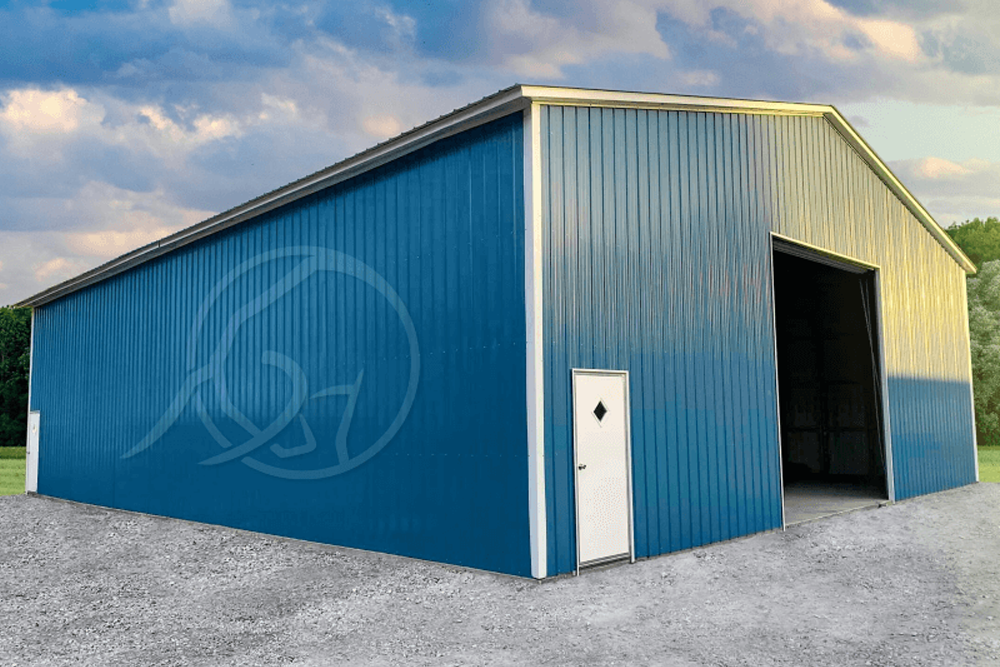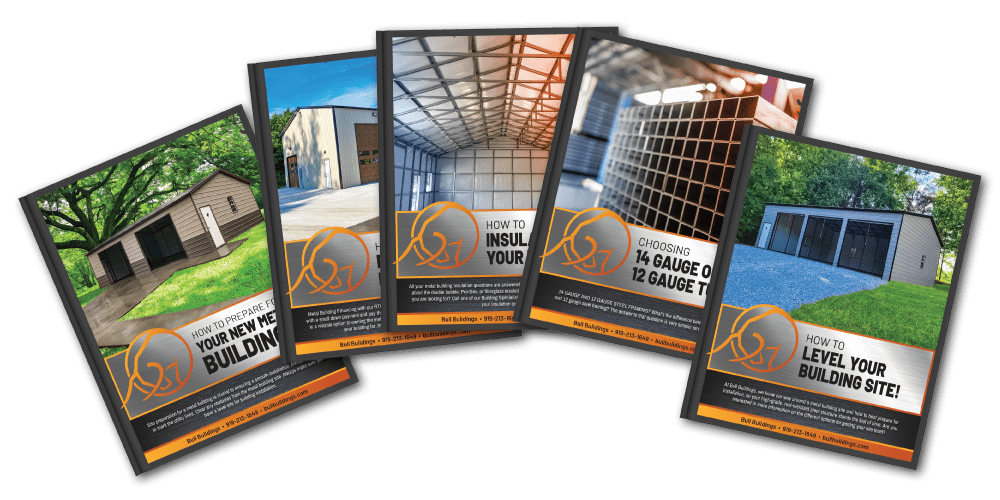
When there’s no attic to work with, insulating your roof becomes more of a challenge – but it’s still completely possible. If you’re wondering how to insulate a metal roof without attic access, you’re not alone. Many metal buildings today are dealing with modern open-beam designs or compact structures that simply don’t leave room overhead. Without a traditional attic space, the insulation process changes – but the need for it does not.
A bare metal roof offers very little resistance to heat transfer. That means your property can quickly overheat in the summer and lose warmth just as fast in the winter. Without proper insulation, temperatures swing wildly, energy bills spike, and the roof becomes a constant battle against the elements. Moisture can also sneak in, condensing beneath the metal panels and eventually leading to water damage or mold. Insulation solves all of this by creating a thermal and moisture barrier – directly below the metal surface.
Why Roof Insulation Still Matters Without an Attic
Even in a structure without an attic, insulation remains a vital part of the building envelope. It’s what protects the inside from the fluctuations outside. The absence of an attic doesn’t eliminate the need for a buffer between the roof and the living space – it only changes where and how that buffer is installed.
Instead of laying insulation on the attic floor, it must be installed directly against the roof deck, between ceiling joists, or along the interior ceiling line. This ensures that the protective layer is still present, even if it’s not hidden in the traditional sense. In fact, because there’s no “buffer zone,” insulating the roof in these buildings is arguably even more critical for day-to-day comfort.
Buildings with exposed ceilings or vaulted architecture often look beautiful, but they come with specific insulation challenges. You don’t have the luxury of space to work around ductwork or layer in multiple types of insulation. Everything has to fit snugly into place and still perform under pressure.
Understanding the Thermal Flow in Metal Roof Systems
Metal is highly conductive. In a roof system, that means heat from the sun transfers through quickly. In colder climates, heat from your building rises and escapes just as easily. This makes insulation essential. Without it, a metal roof turns your structure into an oven in the summer and a freezer in the winter.
To prevent this, you need a high-performance insulation layer directly below the roof panels. Depending on your setup, this can be rigid board insulation, spray foam, or batt insulation pressed between rafters. Each has its benefits. Spray foam seals tight and offers strong thermal resistance. Rigid board is effective and durable. Batts are more accessible for DIY projects, but they need careful installation to avoid air leaks and gaps.
No matter the material, the goal remains the same: reduce heat transfer and eliminate points where warm air can escape or condensation can form. This is where planning matters most. Insulating a house with no attic demands a precise approach tailored to the structure’s framing and intended use.
Dealing With Condensation and Moisture
One of the most overlooked issues is condensation. Warm indoor air meets cold metal panels, and moisture begins to form. Without insulation, that water has nowhere to go. It drips down into your ceiling structure, soaks insulation, and leads to rot or mold. Over time, this can compromise the integrity of your entire roof system.
By insulating correctly, you break that temperature collision. You create a thermal buffer that keeps warm, moist air away from the cold metal panels. Some insulation materials also include vapor barriers, which help seal off the ceiling assembly from air infiltration. This two-pronged approach – controlling temperature and limiting moisture – is what protects your structure in the long run.
Choosing the Right Insulation Material for Low-Clearance Roofs
Once you’ve accepted that insulation is non-negotiable, the next step is figuring out which type makes the most sense when you’re working with little to no attic space. Each method has trade-offs, but some are better suited for tight rooflines and cathedral ceiling setups than others.
Spray foam stands out for a reason. It expands into every gap, clings to the roof deck, and eliminates air leakage. Closed-cell spray foam in particular offers high R-values and adds rigidity to the roof structure. It also acts as a moisture barrier, which makes it a double-duty solution where condensation is a risk. However, spray foam requires experience to apply correctly and often needs to be installed by a pro. Improper use can lead to poor coverage or worse – moisture trapped beneath the surface.
For those aiming to tackle insulation themselves, fiberglass batts may seem more approachable. They’re cut to fit between rafters and joists, and when installed properly, they offer good thermal resistance. But they require exact cuts and careful handling. Gaps between batts can reduce effectiveness, and in structures with irregular spacing or tight curves, getting a good fit is tough. If batts are compressed, their insulation value drops fast. For that reason, many DIYers opt for batt insulation only when the roof structure is predictable and easy to work with.
Rigid board insulation is another smart choice in these setups, especially when you’re insulating from the interior. These panels provide solid thermal resistance, are moisture-resistant, and maintain their shape over time. They can be pressed against the underside of the roof deck or secured to furring strips. Unlike spray foam, they don’t require special tools. And unlike batts, they won’t sag. Still, they require careful measurement and some cutting, especially if you’re dealing with beams, vents, or tricky angles.
In certain cases, natural wool insulation is also an option. While not as widely used in metal roof systems, it offers solid R-values and handles moisture better than fiberglass. Its flexibility allows it to conform to tighter or more awkward cavities. Wool is more expensive than traditional options, but for metal building owners looking for sustainable insulation with good thermal and acoustic properties, it’s worth considering.
Installing Without Sacrificing Ventilation
No matter which material you choose, one critical factor you can’t overlook is ventilation. Just because your structure lacks an attic doesn’t mean airflow isn’t needed. A sealed roof deck may offer energy efficiency, but without air movement, heat and humidity can get trapped and do damage over time. This is why many builders incorporate a small ventilation gap between the insulation and the metal panels – especially in hot climates.
Proper insulation techniques, when combined with strategic ventilation, reduce the risk of mold, structural decay, and overheating. That balance is especially important in metal buildings with exposed roof lines. Insulation alone won’t fix energy loss if the structure can’t breathe.
Making Your Metal Building Smarter and More Comfortable
If you’re still wondering how to insulate a metal roof without attic access, the answer comes down to understanding your roof’s structure and choosing insulation that fits your situation. Even without the extra space of an attic, you can still achieve excellent energy performance and indoor comfort. It just takes a focused plan, the right materials, and a smart installation strategy.
For anyone insulating a workshop, garage, or full-scale building with a metal roof and limited ceiling space, the stakes are even higher. These aren’t just aesthetic upgrades. They’re what separate a usable, durable structure from one that bleeds energy and builds up condensation.
How Bull Buildings Helps You Get It Right From the Start
At Bull Buildings, we understand that every building has a purpose – and no two jobs are the same. Whether you’re insulating a small shop or a rugged metal structure built to last, we help you start with the right foundation.
Our team works with 28 trusted suppliers and secures better pricing thanks to over $40 million in annual sales volume. That means when you come to us with a specific need – like finding a structure that’s easy to insulate without attic space – we connect you with the building that makes the job easier from the beginning.
Instead of spending hours comparing specs and guessing which supplier fits your plans, we handle the legwork. If insulation, ventilation, and long-term comfort are part of your plan, we’ll make sure the metal building we match you with can support those goals. You’ll get a structure designed to handle your climate, your use case, and your future upgrades – without the headaches or surprises.
Let Bull Buildings help you start smart. Tell us what you need. We’ll shop for it. You’ll get a better building because of it.



